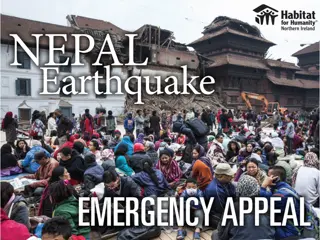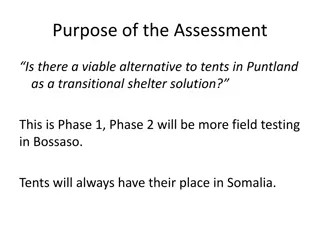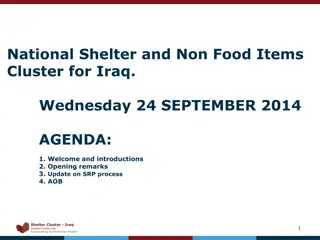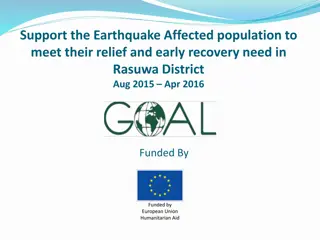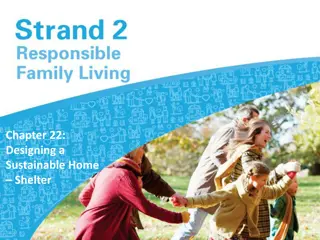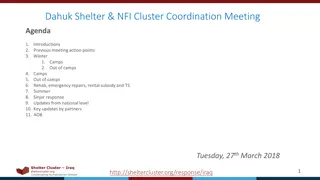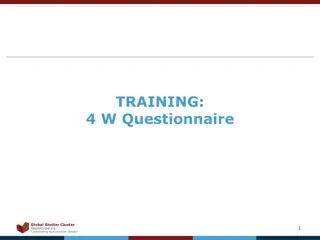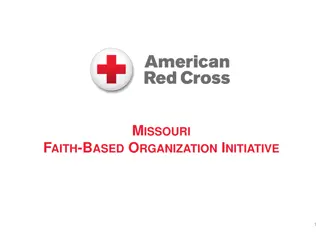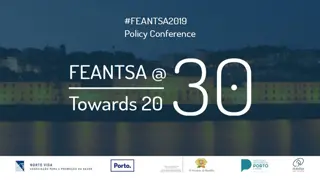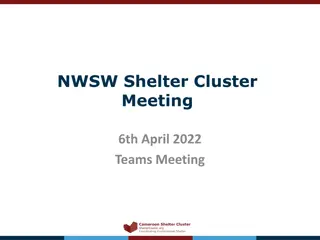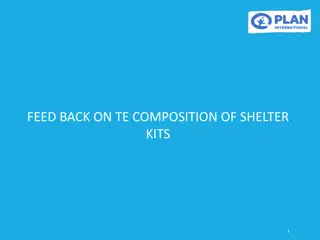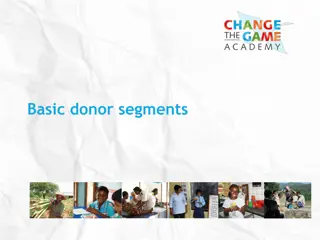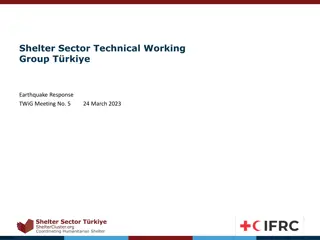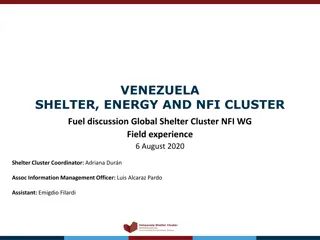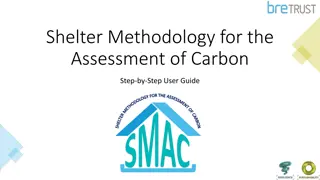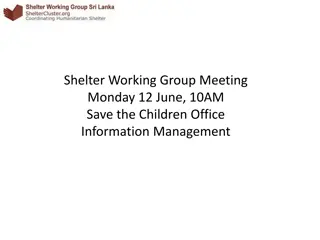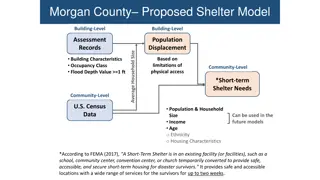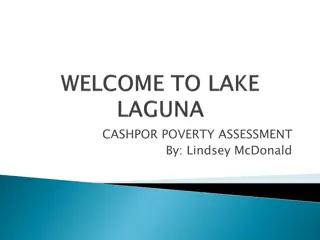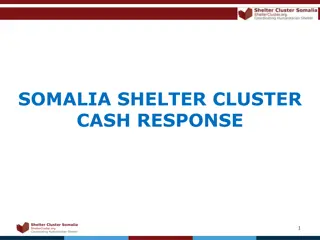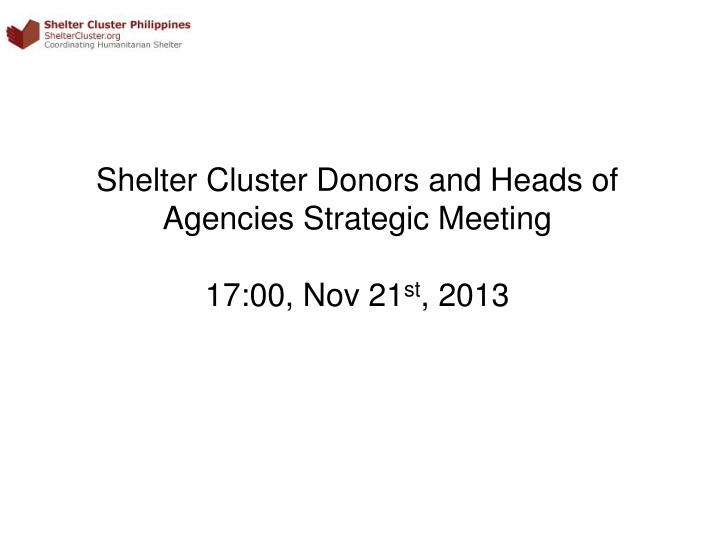
Strategic Meeting Highlights: Shelter Cluster Donors and Agencies
The Shelter Cluster Donors and Heads of Agencies held a strategic meeting to discuss coordination arrangements, funding challenges, shifting priorities, current appeals, impact on the population, response strategies, key factors for prioritization, and strategic gaps in capacity analysis. The meeting highlighted the urgent need to address the shelter needs of the displaced population and emphasized the importance of collaboration among governments, international communities, and civil societies to ensure effective response and recovery efforts.
Download Presentation

Please find below an Image/Link to download the presentation.
The content on the website is provided AS IS for your information and personal use only. It may not be sold, licensed, or shared on other websites without obtaining consent from the author. If you encounter any issues during the download, it is possible that the publisher has removed the file from their server.
You are allowed to download the files provided on this website for personal or commercial use, subject to the condition that they are used lawfully. All files are the property of their respective owners.
The content on the website is provided AS IS for your information and personal use only. It may not be sold, licensed, or shared on other websites without obtaining consent from the author.
E N D
Presentation Transcript
Shelter Cluster Donors and Heads of Agencies Strategic Meeting 17:00, Nov 21st, 2013
Outline of contents Coordination arrangements for shelter Introduce Shelter strategy Funding levels low for the scale of emergency -why? -what capacity do we as a sector have to scale up?
Current Appeal 46 million of which 14 million funded (30%) Scale has increased to 1.1 million houses appeal figures will increase
Shifting priorities Priority Food and water Shelter relief Shelter recovery 4,200 Time
Impact on population Houses destroyed about 520,000 Houses damaged about 500,000. Displaced population - 4.4 million. - Evolving situation figures need to revised continuously
Response Strategy and Progress Emergency Distribution 4000 shelter kits delivered 300,000 in the pipeline subject to funding Emergency Self recovery Support 88,500 in the pipeline Core, Transitional shelter and rental support 20,000 in the pipeline Support to collective centres no information Support permanent Housing and tenure security
Key factors to take into account Prioritisation = Poverty index + number affected + severity of damage (typhoon or typhoon and surge wave) Logistics Capacity of markets to meet the demand Capacity of local government and civil society Land policy relocations, tenure security
Current strategic gap capacity analysis Repair - reconstruction for 1.1 million houses Shelter cluster capacity to address the shelter needs of 400,000 hhs Government Internationa l community Scale of funding Scale of implementation capacity Civil society, self recovery
Supply pipeline gap analysis 28,000 CGI sheets/week in affected area National supply of CGI and other materials being investigated We predict a massive shortfall particularly in roofing and framing materials
Urgent Shelter Needs Item Urgent assistance requested from Donor Roofing materials 26 gauge CGI sheets (10 sheets per hh) 1) Local procurement 2) international procurement International procurement of CGI and fixings 3 million sheets Framing materials Timber Coco lumber Steel Local Salvage of Coco lumber mobilising capacity for industrial scale processing TWIG on cocolumber
Other supply chain considerations Debris removal: Making available safe areas for reconstruction Build back safer: Skilled, trained labour Relocations: minimising multiple relocations, services and ensuring tenure security

